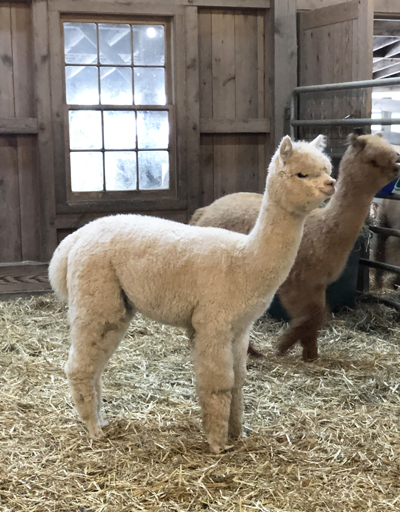Weaner Time
I hope everyone reading this has had a safe and enjoyable Holiday season given the challenges and realities of the world as it currently stands. The most recent (and in relative terms, welcome) drama around these parts, was going from having 41″ of snow fall on 12/17, leading to what could have potentially been the whitest Christmas of our lifetimes here in Vermont, to then — psych! — receiving 2″ of soaking rain and 50 degree temperatures starting on Christmas eve…and consequently shedding 95% of that same snow in even less time than it took to originally fall. But, you know, did we really expect anything different in 2020? The reality is that for better or for worse, we’re just not as easily shocked or surprised as we might have been a year ago.
Now as we hunker down and wait for our numbers to be called in the proverbial vaccine line, the beat goes on with no tell-tale giveaway that this is really unlike any other year insofar as the internal management of the farm goes. Though we all have gotten into the de rigueur habits of wearing masks and social distancing whenever we step off of the farm, within the day to day bubble of CCNF, the work of those six of us that carry it out and the lives of those 280+ alpacas in our care, proceed as usual.

With the first crias of the 2020 birth class having arrived here in mid-May, it means that we have been technically slightly overdue for the first round of weanings, something which after years of trial and error, we have come to do somewhat arbitrarily when those babies hit approximately 6 months of age. One of the primary reasons for waiting that long — as opposed to weaning when the crias hit a certain target weight for instance — is that in point of fact, many of those 6 month old (and often 100+ lb.) crias will have already been at least partially weaned by their respective dams starting 6 to 8 weeks prior to separation. Though the emotional and companionship connection with their mothers is still there at that age, most 6 month old alpacas have already been supporting themselves nutritionally for several months already, here with a mixed diet of hay and supplemental grain.
The complaints of the weaned crias usually last much longer — days versus hours — than those of their mothers. The newly crialess dams have in fact even been known to have a celebratory feed group-wide pronk around their pen the same day that their adorable, fuzzy-wuzzy parasites have been rather unceremoniously kidnapped by Jen, Kim, and yours truly and trucked down to the Main Barn (the dams stay where they are: the residency of our bred females at the Arena being the one true year-round constant) for several months of sleep-away camp.
This time around, weaning required a little bit of an extra shuffle, as the vast majority of the 2019 yearling females (20+ animals in total) had been living down at the Main Barn longer than usual — and taking up valuable real estate — so that they could all be halter trained somewhat belatedly. That being a task for which we had originally lost our verve last March, with the realization that our show teams would be staying on-site for the foreseeable future, with no spring or fall halter shows for us (you can read our takes on the joys of alpaca farming/ranching in a global pandemic here for the springtime version, and then updated here for the fall). With those lovely yearling ladies having yesterday morning rejoined the adult females up at the Arena again though, it opened up space down below for the first bunch of weanlings, which were split into two groups by gender upon arrival at the Main Barn.
The advantage for a farm of our size birthing out in groups of 12 to 14 females with their respective crias, is that in all but the rarest of cases (say a run of all-male cria births, improbable though not unheard of by any means), the now newly weaned crias at least get to go through the initial separation anxiety from their dams in the company of their peers, most of whom they have known and played with since birth. Though not stress-free obviously, it’s safety in numbers and familiarity, which is one of the basic tenets of alpaca herd psychology at any age really. The following days and weeks will be filled with considerably more humming than we like to hear normally (quick primer: the quieter the alpaca barn, the more content and settled its inhabitants are) but with the passing of time and the realization from the new weanlings that the sky is not in fact falling in, this too shall pass. All things being equal, the next oldest group of 2020 crias will join the weaners from yesterday at the Main Barn in 2 weeks time, as we make our way through the 2020 birth class, with the final group of four-legged knee-biters due to be weaned sometime in early March. Just in time for the Arena to begin its reset for the 2021 birthing season!
Best wishes for a more settled and sane world in 2021, please stay safe and healthy and we’ll be back again soon…
Follow me on Twitter at @CCNFAlpacas and on Instagram at ccnfalpacas. You can find also find and follow CCNF on Facebook here.
